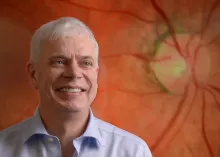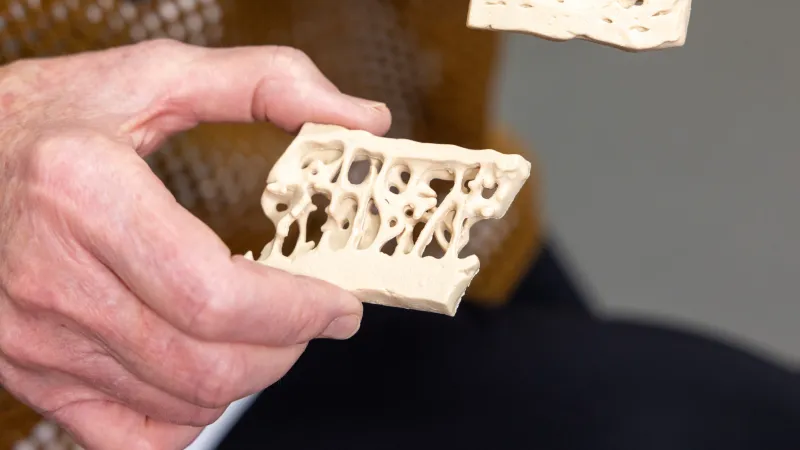Endocrinology
- For all other requests:
- 1-800-777-8442
Diabetes is a disorder in which your body doesn't properly produce or use insulin to convert glucose (sugars), carbohydrates and other foods into energy. Diabetes is marked by high levels of sugar in the blood because the body does not respond to insulin, a hormone that breaks down sugars into energy the body can use.
UI Diabetes Care is a leader in the treatment of people with diabetes and has developed innovative programs designed to help prevent and control diabetes.
We use a patient-centered care approach—a partnership between you and your team of physicians, nurses and dietitians—to develop a diabetes treatment plan that meets your needs.
Our team provides care for patients with:
- Endocrine disorders, including:
- Diabetes
- Obesity
- Related metabolic problems
- Disorders of mineral metabolism, including:
- Adrenal dysfunction
- Gonadal dysfunction
- Osteoporosis
- Pituitary dysfunction
- Thyroid disease
Adult Services
The University of Iowa is a recognized leader in the prevention, diagnosis and treatment of adult diabetes. Clinical services include:
Endocrine system tests:
A thin needle is inserted into the area of interest (usually a thyroid nodule) and cells are removed, spread on a slide, and evaluated by a cytopathologist (someone who diagnoses diseases on a cellular level). This process is repeated around three to six times. It is often performed under ultrasound guidance. The image shown will let doctors know what the diagnosis is.
A nuclear medicine scan that detects abnormally enlarged parathyroid glands after radioactive dye is injected into the blood stream. Scans are repeated a few times throughout the day. This test can locate parathyroid adenoma (benign tumors) around 75 to 80% of the time.
We routinely use SPECT imaging (a more sensitive and accurate type of scan). The radioisotope is taken up by both the thyroid gland and the enlarged parathyroid adenoma immediately. The isotope washes out of the thyroid gland but stays in the parathyroid adenoma, as seen in the image taken at 2 hours. This test is useful to determine if a patient is eligible for minimally invasive parathyroidectomy
An ultrasound uses sound waves to detect masses or fluid in soft tissues. It is especially useful in evaluating thyroid nodules, lymph nodes in the neck, and can identify enlarged parathyroid glands.
An ultrasound probe is inserted into the stomach and duodenum by a gastroenterologist to see the pancreas and surrounding structures. This ultrasound is very useful to localize small pancreatic neuroendocrine tumors, especially insulinomas (a rare, insulin producing tumor of the pancreas).
CT is cross sectional imaging using x-rays. It generates highly detailed images of the neck, chest, and abdomen. It is sometimes used to evaluate if a goiter extends into the chest, or to look for a parathyroid gland that is not in its usual location. In the abdomen, it is very useful for evaluating pancreas, liver, and adrenal masses. We recommend that a non-contrast CT scan be done if there is any suspicion of thyroid cancer in most cases.
This is a new test that is useful for imaging of abnormal parathyroid glands, especially in cases of failed parathyroid surgery. It utilizes the special dye uptake and washout of the parathyroid gland to distinguish it from other similar structures in the neck such as lymph nodes.
This test uses a magnetic field to generate cross sectional images of the body. It is particularly good at distinguishing different types of soft tissue masses. It can also be used to identify parathyroid glands, and to better characterize adrenal and liver masses.
PET scanning can image the increased metabolism of glucose found in most cancers. It is useful in finding otherwise undetected areas of cancer growth. It is also used to image thyroid cancers that do not take up radioactive iodine.
Thyroid cells are designed to take up iodine, and therefore a whole body scan following the administration of radioactively labelled iodine is a very sensitive test for the detection of normal and most cancerous thyroid cells both in the neck and throughout the rest of the body. It also gives information on the function of those thyroid cells. I123 or I131 are the isotopes used in this test.
Octreotide is a synthetic form of somatostatin, a hormone that binds to the somatostatin receptors on many neuroendocrine tumors. It is used to image carcinoid tumors and pancreatic NETs, and to evaluate if the tumors will bind to octreotide for potential treatment with the drug.
This radioactive iodine compound is taken up by cells that synthesize catacholamines. It is used to image pheochromocytomas and paragangliomas. It is particularly useful in detecting metastatic and bilateral disease. With advances in CT and PET imaging, its use is decreasing.
Venous sampling is an invasive technique done by interventional radiology where a catheter is inserted into a vein to withdraw blood samples for analysis of hormone levels from specific locations. The purpose of the test is to localize the source of abnormal hormone secretion. It is used sometimes prior to reoperative parathyroid surgery, in hyperaldosteronism, and in insulinomas or gastrinomas.
Why Choose Us?
The University of Iowa is home to the Fraternal Order of Eagles Diabetes Research Center, one of the nation's foremost diabetes research institutions. As Iowa's most comprehensive diabetes center, UI Health Care draws upon world-class experts from multiple departments to provide services ranging from diabetes prevention to treatment, from community education to cutting-edge research. Iowa's only academic medical center is a national and international resource on diabetes.
- In 2021-22, U.S. News & World Report listed our diabetes and endocrinology services as "high-performing"
- Only center in Iowa to participate in the world's first Diabetes Control and Complication Trial, demonstrating how strict control of blood sugar reduces cardiovascular events.
If you are a patient with diabetes, you can self-schedule your appointment through MyChart.
If you are a patient with any other endocrine issue, you will need a referral from your physician to make an appointment.
Need help finding an Endocrinology provider?
Locations and Offices


Patient Stories


Related News



